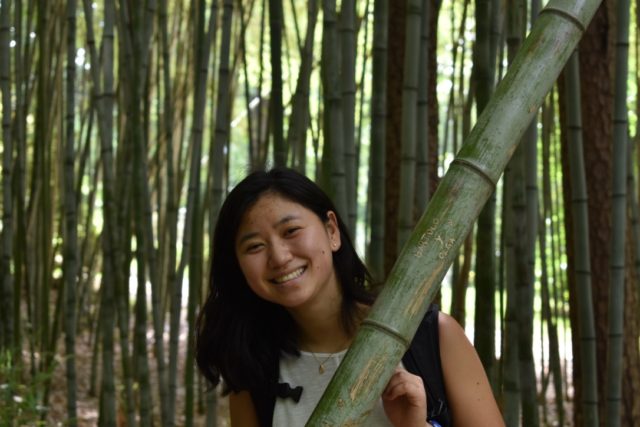We continue our intern introductions with senior Elizabeth Young – you may recognize her from past posts she has authored about standout pieces in our collection!
Hometown: Seattle, WA
Major/Minor: Biology major, French & Francophone studies minor.
Why did you intern in the gallery?: To get more art exposure! Working in the gallery is a great way to take a break from my STEM heavy course load and continue expanding my knowledge and appreciation for art.
What has been your favorite memory from the job?: Working with Tintin Wulia on her exhibit for the Baik artist’s residency last fall. She covered the walls and ceiling with bright pink canvases that had white lettering on them as a response to historical moments during 1965 in Indonesia. It was awesome because I got to sit there and paint things while she talked to me about life, art and all sorts of things.
Do you plan to pursue anything in the arts post-grad? If not, what are your plans?: Possibly, but only as a side hobby. Hopefully next year I’ll be working as a lab tech during my gap year(s) before applying to medical school, but I also did a lot of photography in high school and would love to work as a freelance photographer on the side.
Favorite artist/work and why?: Ansel Adams’ photography, because he has such beautiful shots of the outdoors. Back then people had to carry around incredibly heavy photography plates in comparison with our compact modern cameras, so I’m always impressed by his dedication to capturing nature. His work was also critical to the American conservation movement because it continuously reminded people of the need for protecting the environment.
Hobbies?: Dance, cooking, hiking/anything outdoors
Little known fact about you?: In regards to my hobbies, I actually did not start dancing until freshman year of college, but it’s become my second biggest passion at Davidson.
And finally, if you could have a meal with anyone dead or alive, who would it be and why?: Maybe Rosalind Franklin? She was a molecular biologist that helped discover the helical structure of DNA, but she never gets much credit for this discovery because Watson and Crick stole some of her data and pitched it as their own. A massive rip for women in STEM. She did, however, help pave the way for many other female scientists.

